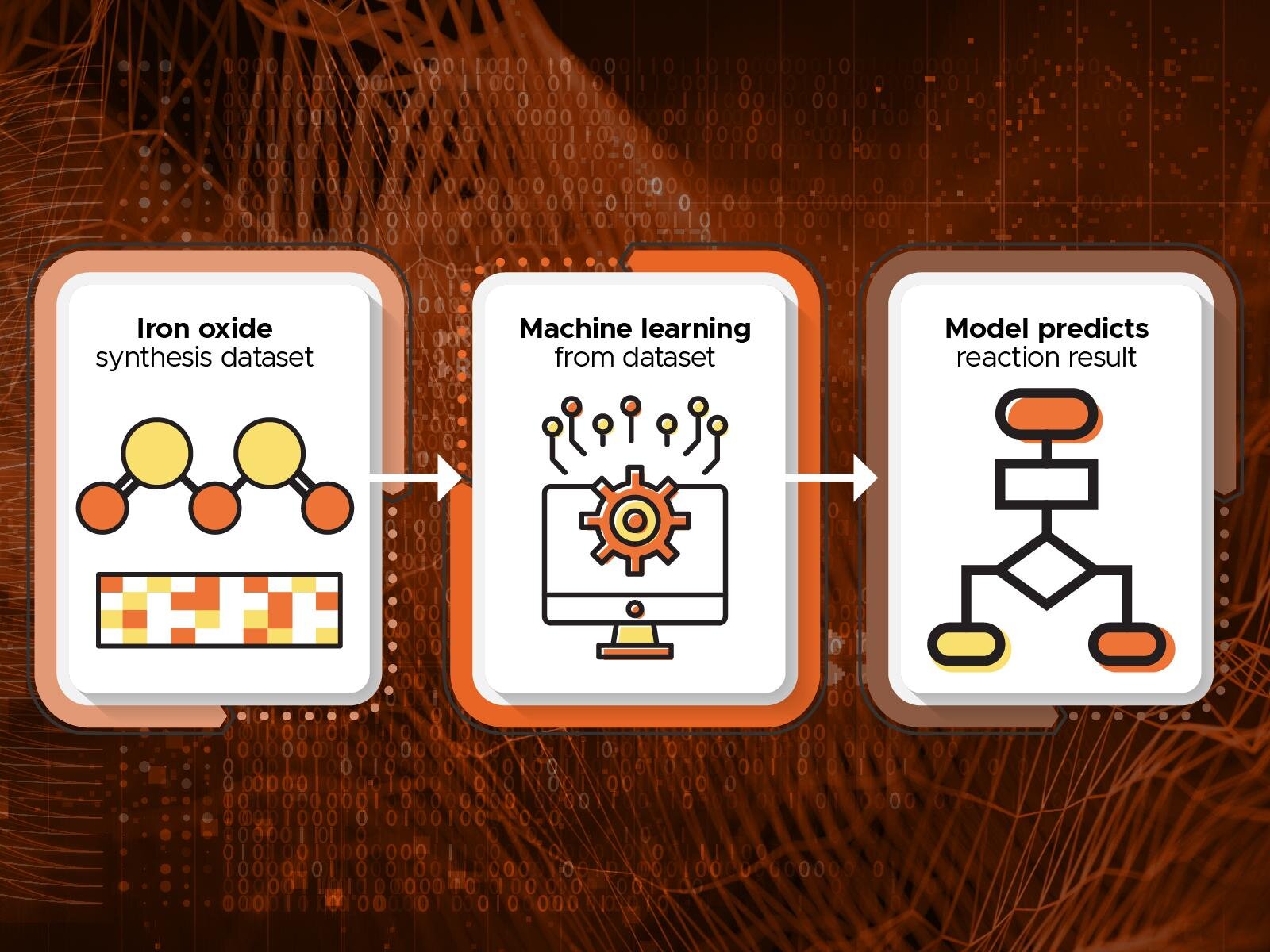
Typically, researchers attempting to synthesize specifically targeted particles of materials have had to rely on intuition or trial-and-error methods. This approach can be inefficient, requiring significant time and resource investments.
To overcome the ambiguities of this approach, researchers from PNNL harnessed the power of data science and ML techniques to help streamline synthesis development for iron oxide particles. The study is published in the Chemical Engineering Journal.
Their approach addressed two pivotal issues: identifying feasible experimental conditions and foreseeing potential particle characteristics for a given set of synthetic parameters. The trained model can predict potential particle size and phase for a set of experimental conditions, identifying promising and feasible synthesis parameters to explore.
This innovative approach represents a paradigm shift for metal oxide particle synthesis, potentially markedly economizing the time and effort expended on ad hoc iterative synthesis approaches. By training the ML model on careful experimental characterization, the approach demonstrated remarkable accuracy in predicting iron oxide outcomes based on synthesis reaction parameters. The search and ranking algorithm yielded plausible reaction conditions to explore from the input dataset. It also revealed the previously overlooked importance of pressure applied during the synthesis on the resulting phase and particle size.
More information:
Juejing Liu et al, Machine learning assisted phase and size-controlled synthesis of iron oxide particles, Chemical Engineering Journal (2023). DOI: 10.1016/j.cej.2023.145216
Provided by
Pacific Northwest National Laboratory
Citation:
Developing data science approaches for nanoparticle synthesis (2024, February 12)
retrieved 13 February 2024
from https://phys.org/news/2024-02-science-approaches-nanoparticle-synthesis.html
This document is subject to copyright. Apart from any fair dealing for the purpose of private study or research, no
part may be reproduced without the written permission. The content is provided for information purposes only.
